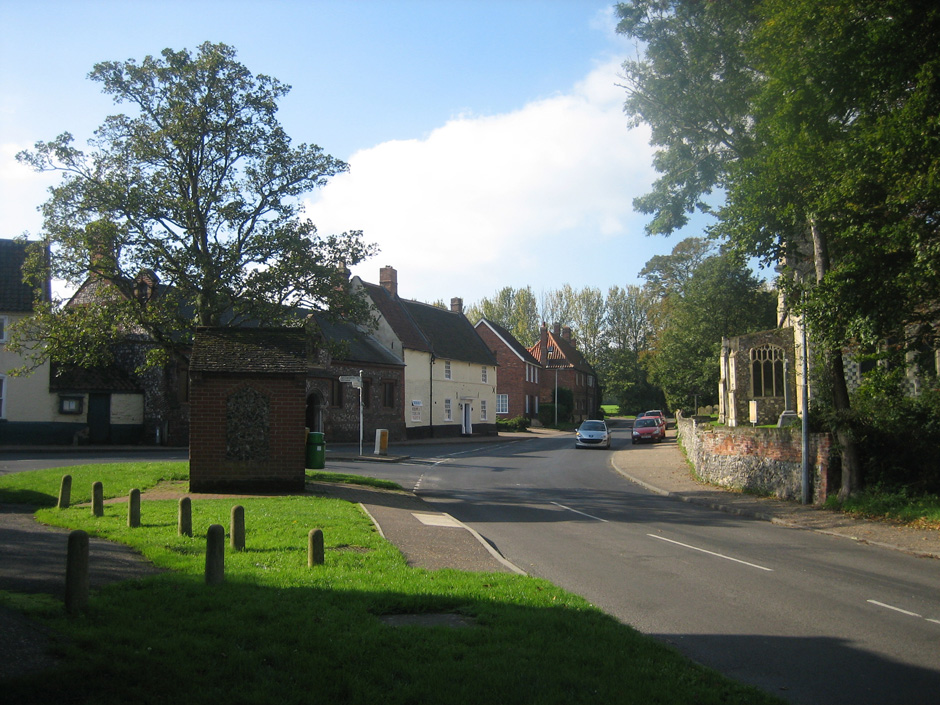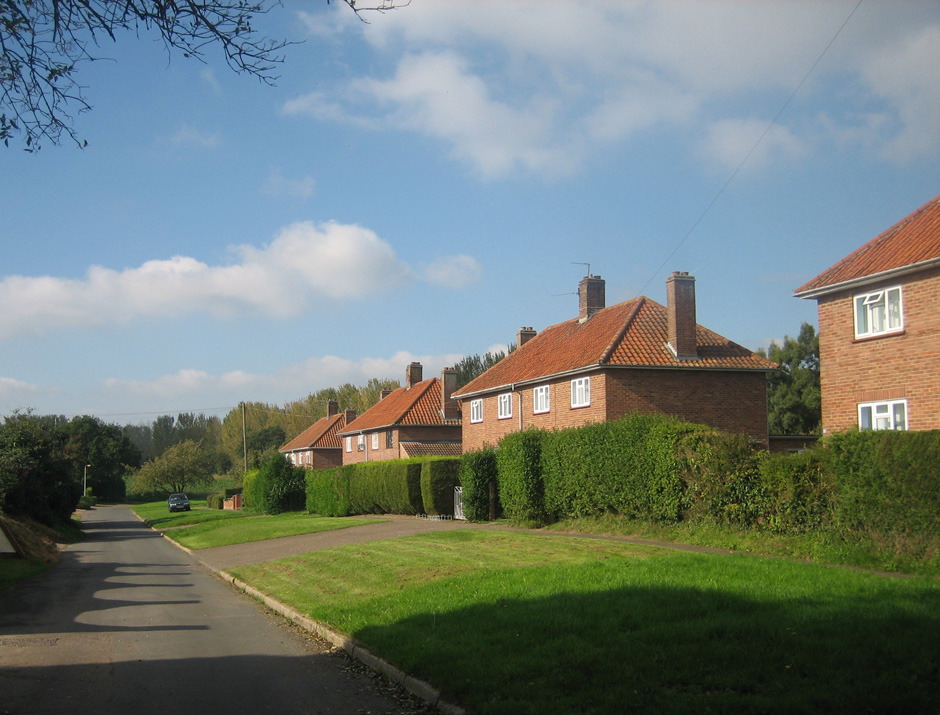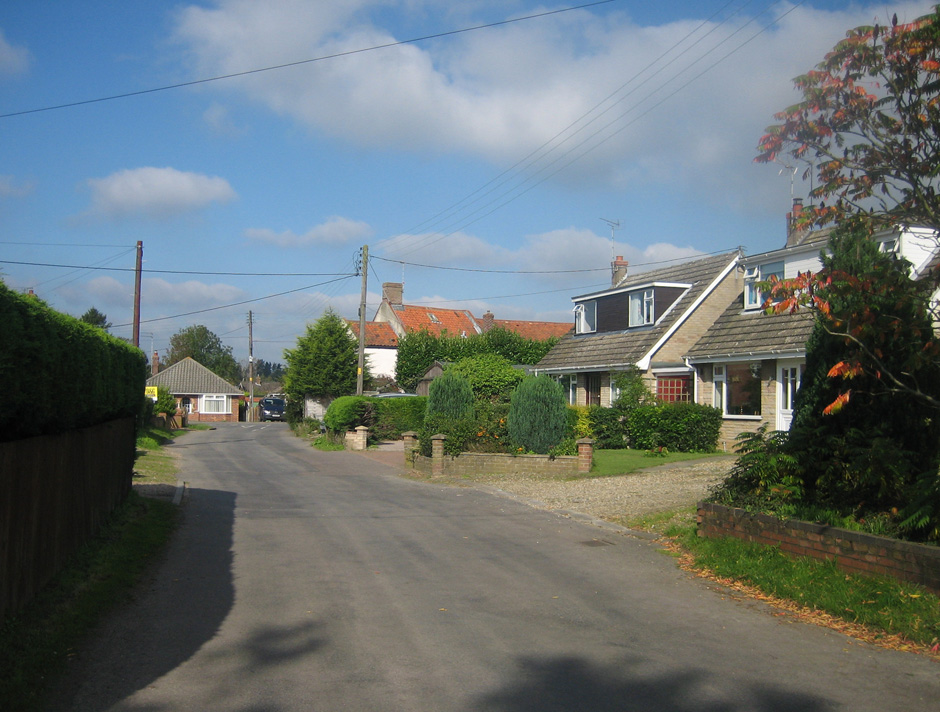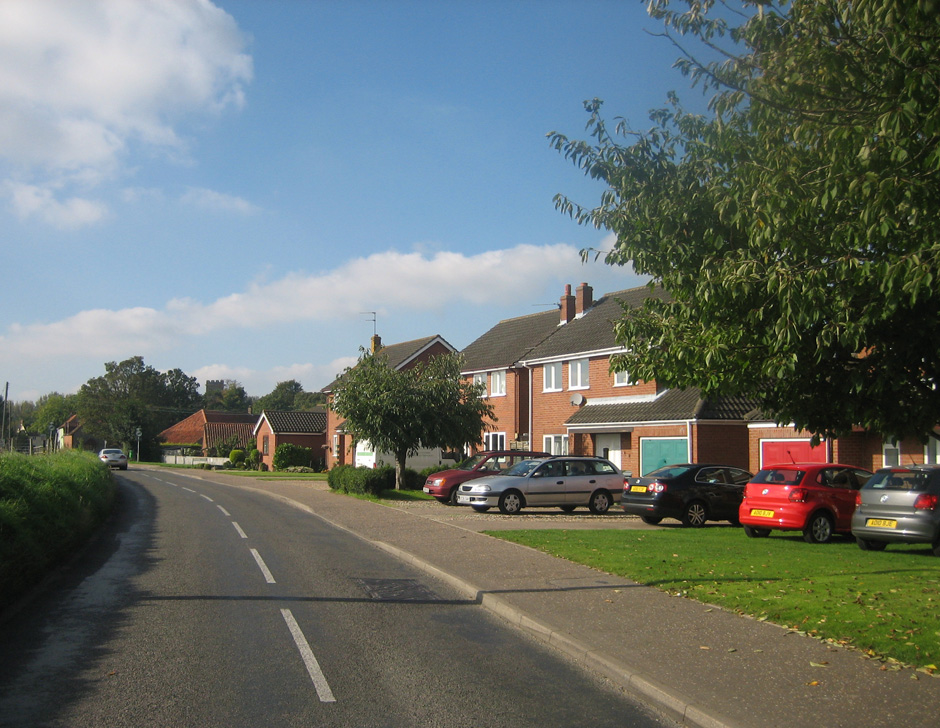Norfolk’s nucleated settlements – its picture postcard villages, if you will – have typically existed since mediaeval times, operating as markets, service-centres for Norman monasteries or castles, or capitalizing on passing trade at river-crossings. They have distinct and comparatively dense centres, characterized by more-or-less continuous runs of houses on one or more streets, surrounded by later phases of lower-density development. Images of these traditional village centres often form the back-bone of a house-builder’s planning application ‘design statement’, to support a claim for ‘local distinctiveness’ (more on this later)…but any similarities between a Norfolk village and a modern housing estate are fairly superficial.
Whereas the house-builder prefers detached houses or semis, intricately stepped building lines and crazily wiggling roads, the traditional village core tends to have a consistent building line along gently inflected roads, and a high proportion of attached houses. In their hey-day these settlements would have seemed like bustling market-towns, but having missed out on the prosperity brought by the railways, and now suffering the effects of car-based shopping, they have failed to grow into modern towns. In my immediate area (south Norfolk) these nucleated villages would be typified by Hingham, Long Stratton, New Buckenham.
On my north-Norwich tour I chose Horsham St Faith to represent this archetype. It was already a settlement of some 200 inhabitants when the Domesday Book was compiled, and subsequently enjoyed the status and trade of a priory founded by Robert and Sybil Fitz-Walter in 1105. During the middle ages the village prospered on weaving as did several settlements of equal distance from the thriving wool- and cloth-markets of Norwich. A run of weavers’ cottages is one of the recognizably pre-C19th buildings that make up the rather straggling ‘core’ of the village (actually less than 20% of its present-day fabric), arranged around two roughly triangular ‘village greens’.
Like virtually all Norfolk settlements, Horsham St Faiths has a good stock of solidly handsome 1930s council housing, followed by bungalows and detached houses from the ‘60s, ‘70s and ‘80s as the village grew, boosted by car-born commuting. Also like most other villages, Horsham has lost most of its retail trade to the supermarkets on the edge of Norwich; only a pub and a small village store and Post Office remain.
More on Norfolk’s DNA: The Non-Nucleated Village





Wish more people thought this way
Thanks for your pithy compliment! Glad you enjoyed the piece….